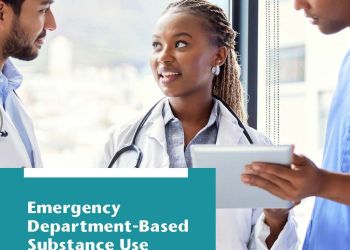With support from the Centers for Disease Control and Prevention (CDC) and in partnership with the University of Washington (UW), NACCHO is pleased to announce ‘Advancing Harm Reduction through Data Analysis & Evaluation’ one of two new funding opportunities to promote monitoring and evaluation (M&E) of syringe services programs (SSPs) and support the use of data for SSP program improvement.
Advancing Harm Reduction through Data Analysis & Evaluation
The purpose of this funding opportunity is to support and build capacity for data analysis and evaluation at SSPs. The funding opportunity is also designed to support SSPs in using data for program and policy improvement and inform future technical assistance opportunities by identifying lessons learned and best practices for the field and identifying models and best practices for data analysis at SSPs of varied capacity.
Through this Request for Applications (RFA), NACCHO will issue contracts of up to $90,000 to LHD-operated or community-based SSPs to implement data analysis projects for approximately 12 months. Applications are due on January 13, 2022. Access the RFA here.
Webinar & Office Hours:
Informational Webinar: NACCHO hosted an informational webinar for potential applicants on Monday, December 13th at 1 – 3 PM ET. The first hour of the webinar focused primarily on this webinar and the second hour focused primarily on an associated RFA to support a learning collaborative related to the implementation of point in time surveys. A recording of the webinar can be accessed here and slides can be accessed here.
Offices Hours: NACCHO and UW will host office hours at the following times to answer questions about the RFA. Organizations can register here for one of four spots during each office hours session which will give them priority to discuss their questions with members of the NACCHO and UW team. If there are no more spots left for office hours, you can still join, but you will have to wait until after the first four organizations who register discuss their questions. To join office hours, use this Zoom link.
During the following three office hours, NACCHO and UW will answer questions about this RFA as well as an associated RFA focused on the implementation of point in time surveys at SSPs.
- Tuesday, December 14th at 3 – 4 PM ET
- Thursday, December 16th at 1 – 2 PM ET
- Monday, December 20th at 2 – 3 PM ET
During the following office hours, NACCHO and UW will only answer questions about this RFA:
- Monday, January 10th at 2 – 3 PM ET
Application Submission & Attachments:
Applicants will need to submit the following documents to Kat Kelley, Senior Program Analyst, HIV, STI, & Viral Hepatitis ([email protected])—using the subject line “RFA Submission – “Advancing Harm Reduction through Data Analysis & Evaluation’”—by January 13, 2022. For additional information, access the RFA here.
- Application Form (Word)
- Budget Template and Narrative
- Budget Guidance
- Contract Cover Sheet
- Vendor Information Form
- Certification of Non-Debarment
- W-9
- FFATA data collection form
- Proof of active registration with SAM.gov (see question 4 in the contract cover sheet)
- Proof of fringe and/or indirect costs in the budget, if applicable (see the contract cover sheet and budget guidance documents for more information)
- * Optional: Letters of Support from partner organizations
Frequently Asked Questions (FAQ)
To submit a question about this RFA, contact Kat Kelley ([email protected]). This section will be updated as questions are submitted.
Eligibility
Q: Can we apply to and be eligible for both funding opportunities (Advancing Harm Reduction through Data Analysis & Evaluation and Use of Learning Collaborative Model to Build Capacity of Syringe Services Programs to Conduct Point in Time Surveys)?
A: Yes, organizations can apply to and could be funded for both funding opportunities.
UPDATED - 12/21/21
Q: Can we apply to this funding opportunity if we currently receive funding through NACCHO’s Building Capacity for Harm Reduction Monitoring & Evaluation project?
A: Yes, organizations that receive funding through the Building Capacity for Harm Reduction Monitoring & Evaluation project are eligible for this funding opportunity.However, the work/projects conducted under each funding opportunity should be distinct.
NEW - 12/13/21
Q: Our organization (a university) partners with an SSP that has limited capacity to manage the finances of another grant at this time. Can we apply if we could include a letter of support from the SSP?
A: This funding opportunity is targeted toward SSPs, however, NACCHO also encourages interested SSPs to work with local partners, including local health departments (LHDs), through this project. Consequently, if an organization that is neither an SSP nor an LHD applies as the primary applicant, they must (1) Include a letter of support from the SSP describing how the applicant and SSP will work together to implement project activities; AND (2) include at least one of the following:
- Include funding for the SSP in their budget (i.e., the applicant proposes to contract with the SSP); OR
- Include a statement in the letter of support from the SSP describing why the SSP will not be receiving funds directly (e.g., because of their limited capacity to manage the finances of the grant); OR
- Include a letter of support from the LHD describing how they will be involved and/or how the proposed project will benefit them (e.g., how the LHD will use the findings of data analysis activities)
NEW – 12/15/21
Q: Are tribal jurisdictions eligible for funding?
A: Tribal jurisdictions and organizations are eligible if they are in a jurisdiction that has consulted with CDC and received a determination of need from CDC, a designation that indicates the jurisdiction is experiencing or at-risk of significant increases in hepatitis infections or an HIV outbreak due to injection drug use. At this time, 44 states (all but AR, KS, MS, NE, TX, and SD), the District of Columbia, Cherokee Nation, and Puerto Rico have consulted with and obtained a determination of need. Consequently, tribal jurisdictions or organizations that are based in any of those jurisdictions are eligible for this funding. For additional information about the determination of need requirement and process, visit here.
Use of Funding
Q: Would SSPs be able to use this money to purchase vehicles for outreach?
A: No, SSPs cannot use these funds to purchase vehicles for outreach.
Q: Would SSPs be able to use these funds to purchase equipment such as tablets and laptops, e.g., for data collection or survey administration?
A: Yes, SSPs can use these funds to purchase equipment such as tablets and laptops if they are intended for project implementation, and cost less than $5,000 per item, as described in their budget narrative. However, NACCHO must seek prior approval from CDC for equipment costs included in contractor budgets and consequently budget revisions may be required if it is determined that a purchase is unallowable as part of the contracting process. See the budget guidance for additional information.
Q: The RFA states that incentives are not allowed. Would gas cards or bus passes for SSP participants be allowed to facilitate their transportation to the site to complete a survey or provide data for SSP M&E?
A: No, gas cards or bus passes for SSP participants would be considered incentives and are consequently not allowed. However, other travel costs are allowed, for example if SSP personnel conducted travel throughout their jurisdiction to support project implementation (e.g., to administer a point in time survey, to share findings of data analysis evaluation activities).
NEW – 12/20/21
Q: Can we use funds to purchase the software Apricot, which would assist us in putting our current data into an organized system that can pull reports and support data analysis?
A: Yes, applicants can propose to purchase software such as Apricot. However, they will need to explain how they will use the software system for their data analysis and evaluation plan—not just their data collection and management—in both the application form and the budget. Consequently, their description of what analysis they plan to do and how the software will contribute to the data analysis and/or evaluation will affect how competitive such a proposal will be.
Project Scope
Q: The RFA states that projects should focus on analyzing existing data—data collected prior to the grant period. Could our proposal integrate an analysis of both our existing data as well as new data and/or leverage data from other sources (e.g., data from the health department or a research study)?
A: The project itself should focus on data analysis and/or evaluation, not data collection, and the proposal will primarily be scored based on the analysis you plan to do with existing (already collected) data. If your organization is able to collect new data during the project period you can incorporate that into the data analysis you conduct as part of this project. I would encourage you to share this information in your application but not focus on it heavily because when reviewers are assessing an application in terms of the “Realistic and Feasible” criterium, they will primarily be considering whether the applicant’s existing data can help them achieve their data analysis goals. You can absolutely leverage data from other sources in your analysis and both data from the health department or a research study would be appropriate to include in your data analysis plan.
NEW – 12/15/21
Q: The RFA states that the data that will be analyzed must be collected prior to the project start date. What is the cut-off date for this?
A: The data that will be analyzed through this project should be collected by early April 2022, which is when NACCHO anticipates contracts will be executed. If data collection will not be complete before the application deadline (January 13, 2022), then the applicant should describe their plan for collecting the data by early April 2022 (in the top row in the table under Question 23 in the application form).
NEW – 12/15/21
Q: Would geomapping data be considered quantitative?
A: Geomapping data would likely be considered quantitative, but may depend on what you are mapping and what the data source is. Join the Office Hours or contact Kat Kelley ([email protected]) to discuss specifics.
NEW – 12/20/21
Q: On page 6 of the RFA, in the citation it states “The project period shall begin upon both parties’ full execution of the contract and will end on September 29, 2022, contingent on CDC approving a no-cost extension.” I know it is anticipated that the contracts will begin in April 2022 so I just wanted to confirm whether this will be a 6-month grant or 12-month grant (contingent upon CDC approval of extension of course).
A: The reference to September 29, 2022 in the Advancing Harm Reduction through Data Analysis and Evaluation RFA is a typo. The project period will be 12 months long.
Personnel and Partnerships
Q: Can the SSP hire someone outside of the organization to provide assistance with the capacity building for doing data analysis and/or evaluation? And can this be another organization or a person from another organization? Or, do the analysis/evaluation activities have to be done by someone that is already working for the SSP (e.g., the Executive Director, Manager)?
A: Yes, the SSP can contract with another organization or person to support the implementation of the project.
Q: If an SSP contracted with a third party (e.g., a university) to conduct data analysis or evaluation for them, would they (the third party) need to establish a process for the SSP to use for data analysis and evaluation after the funding is gone?
A: If the SSP selected Priority A (Establish or enhance and implement processes for routinely and sustainably analyzing existing program data) as their primary priority, then ensuring the SSP can continue to do data analysis/evaluation after the funding is gone would be critical in ensuring the application is competitive. If the SSP selected Priority B (Conduct a specific data analysis or evaluation project on a one-time or periodic basis to answer a specific evaluation question) as their primary priority, then it would be important to demonstrate how the SSP will use the findings of data analysis or evaluation activities (e.g., for program improvement), but it would be less important to describe and plan for data analysis/evaluation activities beyond the project period.
Project Requirements
NEW - 12/13/21
Q: Will selected organizations be required to share their data with NACCHO, UW, and/or the CDC?
A: No, selected organizations will not be asked to share their raw data with any of the three organizations. They may be asked to share general findings, summary statistics, or project summaries.
Other
NEW – 12/15/21
Q: How many awards do you anticipate funding?
A: At least seven organizations will be funded.
NEW – 12/20/21
Q: Do you have any recommendations for data analysis or data visualization software?
A: Many data collection systems that SSPs use offer simple reporting functionality but do not offer comprehensive analysis features. Below are some software options that many SSPs use for analysis, this is not a comprehensive list and programs can propose software options not listed here in their projects. For programs that wish to operationalize dashboards or visualizations with existing data, some platforms to consider are Microsoft BI, Tableau, or Google Data Studio (which would be purchased through a Google Workspace subscription). Programs that are considering statistical work may consider using r (it is free) or purchasing SPSS or SAS for quantitative analysis. If a project includes qualitative analysis programs may want to consider Atlas.ti, NVivo, or a Dedoose subscription. However, the funding opportunity can only support subscription or related costs for the project period itself (i.e., not multi-year subscriptions). Additionally, NACCHO must seek prior approval from CDC for software and equipment costs included in contractor budgets and consequently budget revisions may be required if it is determined that a purchase is unallowable as part of the contracting process. See the budget guidance for additional information.
NEW - 1/11/22
Q: Where can I learn more about software options for data analysis?
A: Check out this resource related to a previous NACCHO funding opportunity that includes information and frequently asked questions about the software systems most commonly used by SSPs.
NEW - 1/12/22
Q: If we’re applying under a fiscal sponsor, what parts of the application forms and related materials should be completed based on our organization’s information versus our fiscal sponsor’s information?
A: You should complete the application form based on your organization’s information, excluding the “Finance Point of Contact” section, which should include the fiscal sponsor’s information. You should complete the contracting materials (budget and budget narrative, contract cover sheet, vendor information form, certification of non-debarment, W-9, and FFATA data collection form) based on your fiscal sponsor’s information.


